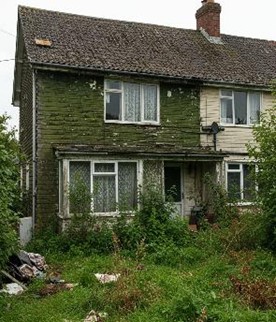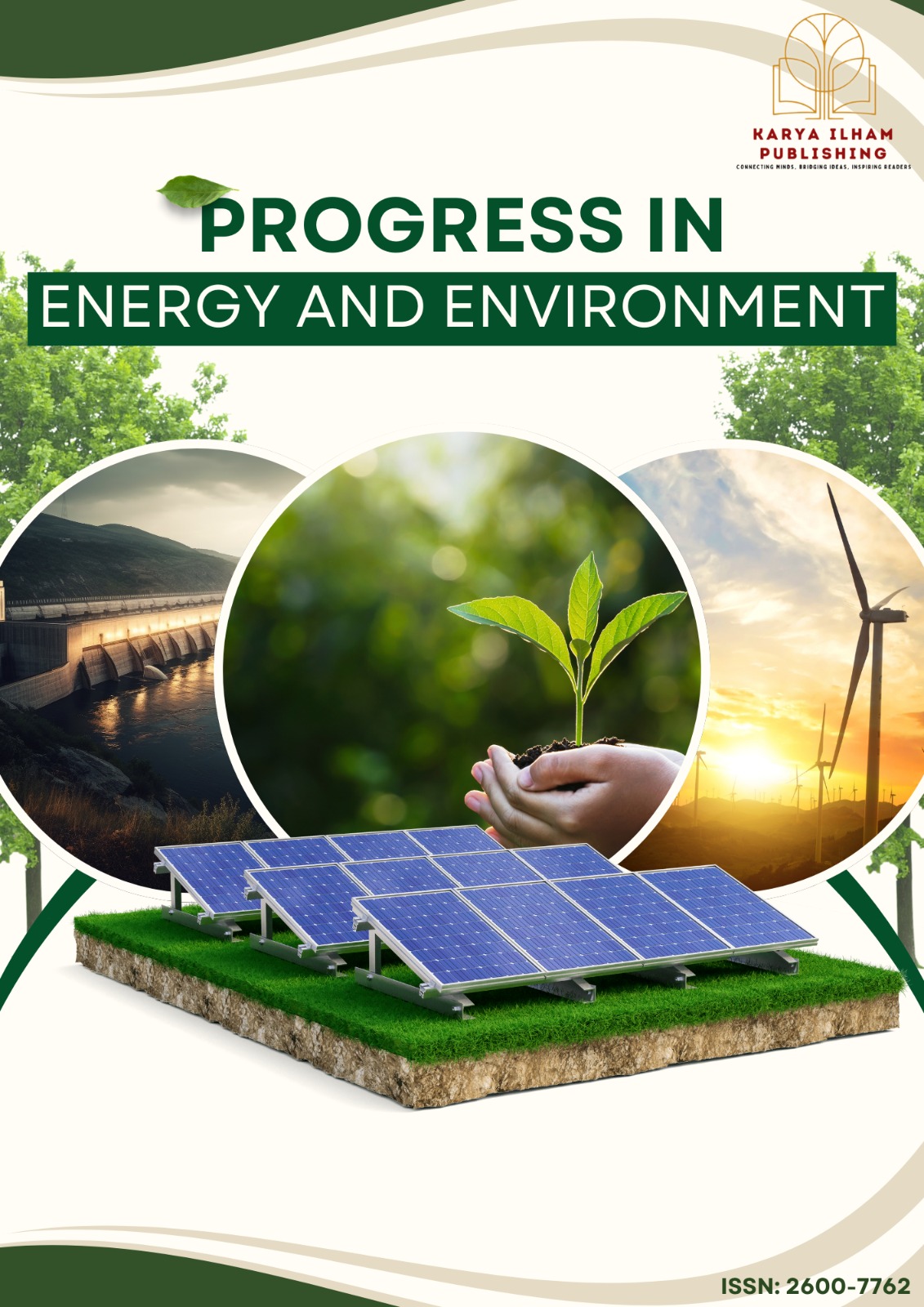Climatic Factors and Their Impact on Building Anatomy
Faktor Klimatik dan Impaknya terhadap Anatomi Bangunan
DOI:
https://doi.org/10.37934/progee.31.2.1828Keywords:
Building Defects, Climatic Factors, Maintenance, Degradation, Dampness, Kecacatan Bangunan, Faktor Klimatik, Penyelenggaraan, Kemerosotan, KelembapanAbstract
Long a major area of human activity, the building sector has been subject to environmental damage, which has been identified as a cause of building faults. Building defects can be multifarious and multisystemic. The idea of reducing the impact of climate change by lowering human-caused greenhouse gas emissions has attracted much attention. Still, it is also known that some consequences of environmental damage would find their way into manmade surroundings. Although it is usually expected that buildings should last several decades, the lifetime of buildings varies greatly internationally. Building materials deteriorate under weathering; if not treated, this can lead to an accelerated rate and maybe more severe degradation. Changes to maintenance plans could allow minor variations in the pace of degradation. Still, we may need to adjust if we are to reach significant improvements in the degradation rate. Globally, the appearance of any new degrading process seems unlikely. However, due to a lack of regional knowledge or awareness, earlier minor problems could start to take significance at the local level someday. This study was therefore carried out to ascertain how climatological elements affect building flaws. The results exposed that moisture, fungal development, mould, blistering, and corrosion constituted the main causes of damage arising from the climate. The issues started from several elements: rain, condensation, air moisture, water leakage, humidity, high temperatures, UV radiation, dampness, oxygen, salt, and acids.
Sektor pembinaan, yang telah lama menjadi kawasan utama aktiviti manusia, telah lama terdedah kepada kerosakan alam sekitar yang telah dikenalpasti sebagai punca khusus bagi kecacatan bangunan. Kerosakan bangunan boleh menjadi pelbagai dan melibatkan banyak sistem. Idea untuk mengurangkan impak perubahan iklim dengan mengurangkan pelepasan gas rumah hijau yang disebabkan oleh manusia telah menarik perhatian yang banyak. Namun, ia juga diketahui bahawa beberapa kesan kerosakan alam sekitar akan mempengaruhi persekitaran buatan manusia. Walaupun biasanya diharapkan bangunan seharusnya bertahan selama beberapa dekad, jangka hayat bangunan berbeza-beza secara antarabangsa. Bahan bangunan rosak melalui proses pelapukan; jika tidak diuruskan, ini boleh menyebabkan kadar kerosakan yang dipercepatkan dan mungkin lebih teruk. Perubahan kepada pelan penyelenggaraan boleh membenarkan variasi kecil dalam kelajuan kemerosotan. Namun, ia mungkin perlu untuk membuat penyesuaian jika kita ingin mencapai peningkatan yang signifikan dalam kadar kemerosotan. Secara global, kemunculan sebarang proses degradasi baru nampaknya tidak mungkin. Walau bagaimanapun, disebabkan kekurangan pengetahuan atau kesedaran di peringkat serantau, masalah kecil yang dahulu tidak penting mungkin mula menjadi signifikan di peringkat tempatan pada masa depan. Oleh itu, kajian ini dijalankan untuk mengetahui bagaimana faktor klimatologi mempengaruhi kecacatan bangunan. Hasilnya mendedahkan bahawa kelembapan, pertumbuhan kulat, acuan, lepuh, dan kakisan merupakan punca utama kerosakan yang timbul akibat iklim. Masalah ini berpunca dari beberapa elemen termasuk hujan, kondensasi, kelembapan udara, kebocoran air, kelembapan, suhu tinggi, sinaran UV, lembapan, oksigen, garam, dan asid.
References
[1] P. Trotman, C. Sanders, and H. Harrison, Understanding dampness. BRE Bookshop, 2004.
[2] S. Wheeler and R. Critchley, Condensation dampness. Chartered Institute of Environmental Health Practice Notes, 1998.
[3] N. T. Thanh, Improvement of Environmentally-Friendly Alkyd Composite Coating with Graphene Oxide. Malaysian Journal on Composites Science and Manufacturing 7(1) (2002) 1-10. https://doi.org/10.37934/mjcsm.7.1.110
[4] H. U. Zaman, Fabrication and Analysis of Physico-Mechanical Characteristics of Chemically Treated Bhendi Fiber Reinforced Thermoplastic Composites: Effect of UV Radiation, Malaysian Journal on Composites Science and Manufacturing. 13(1) (2024) 1-13. https://doi.org/10.37934/mjcsm.13.1.113
[5] S.W. Tan, N.M. Sani, and M.Z. Sulieman, Investigation into Common Decay of Educational Buildings in Malaysia. MATEC Web of Conferences 10 (2014) 05001. https://doi.org/10.1051/matecconf/20141005001
[6] M.H. Nensok, and H. Awang, Investigation of Thermal, Mechanical and Transport Properties of UltraLightweight Foamed Concrete (ULFC) Strengthened with Alkali Treated Banana Fibre. Journal of Advanced Research in Fluid Mechanics and Thermal Sciences 86(1) (2021) 123-139.
[7] R. Burkinshaw, and M. Parrett, Diagnosing damp. Coventry: RICS Books, 2004.
[8] N.M. Sani, and A.F. Phius, Investigation of Industrialised Building System Performance in Comparison to Conventional Construction Method. MATEC Web of Conferences 10 (2014) 04001. https://doi.org/10.1051/matecconf/20141004001
[9] J.C. Khor, and N.M. Sani, Approaches to Construction Waste Management in Malaysia. MATEC Web of Conferences 17 (2014) 01014. https://doi.org/10.1051/matecconf/20141701014
[10] Michigan State University Extension, MSUE. Moisture problems in the home. Michigan State University Extension Bulletin E-2109, 2008.
[11] A.E. Noy and J. Douglas, Building surveys and reports. 3rd ed. UK: Blackwell Publishing, 2005.
[12] T.A. Oxley, and E.G. Gobert, Dampness in buildings. 2nd ed. Oxford: Butterworth Heinemann, 1989.
[13] N.A. Othman, N.M. Sani, A Prospective Study on Building Quality: Relationship between Workmanship Quality and Common Building Defects of Low-Cost Construction Projects. MATEC Web of Conferences 17 (2014) 01001. https://doi.org/10.1051/matecconf/20141701001
[14] N.A. Agus Salim, S.W. Tan, N.M. Tawil, and N.M. Ulang, Assessment of Significant Causes to School Building Defects. E3S Web of Conferences 3 (2014) 01002. https://doi.org/10.1051/e3sconf/20140301002
[15] T.S. Jing, and N. Utaberta, Appraisal of Moisture Problem of Inheritance Building Envelope Assemblies via Visible and Infrared Thermography Methods. Jurnal Teknologi 75(5) (2015) 1–6. https://doi.org/10.11113/jt.v75.4951
[16] M. Mahli, A.L. Che-Ani, H. Yahaya, N.M. Tawil, and M.A. Othuman Mydin, School Building Defect Pattern. MATEC Web of Conferences 15 (2014) 01007. https://doi.org/10.1051/matecconf/20141501007
[17] M.H. Hassan, M.A. Mydin, and N. Utaberta, Study of Rising Dampness Problem in Housing Area in Klang Valley, Malaysia. Jurnal Teknologi 75(5) (2015) 113–119. https://doi.org/10.11113/jt.v75.5080
[18] Seeley IH. Building maintenance. London: The Macmillan Press Ltd., 1994, pp. 362.

Downloads
Published
Issue
Section
License
Copyright (c) 2025 Progress in Energy and Environment

This work is licensed under a Creative Commons Attribution-NonCommercial 4.0 International License.















